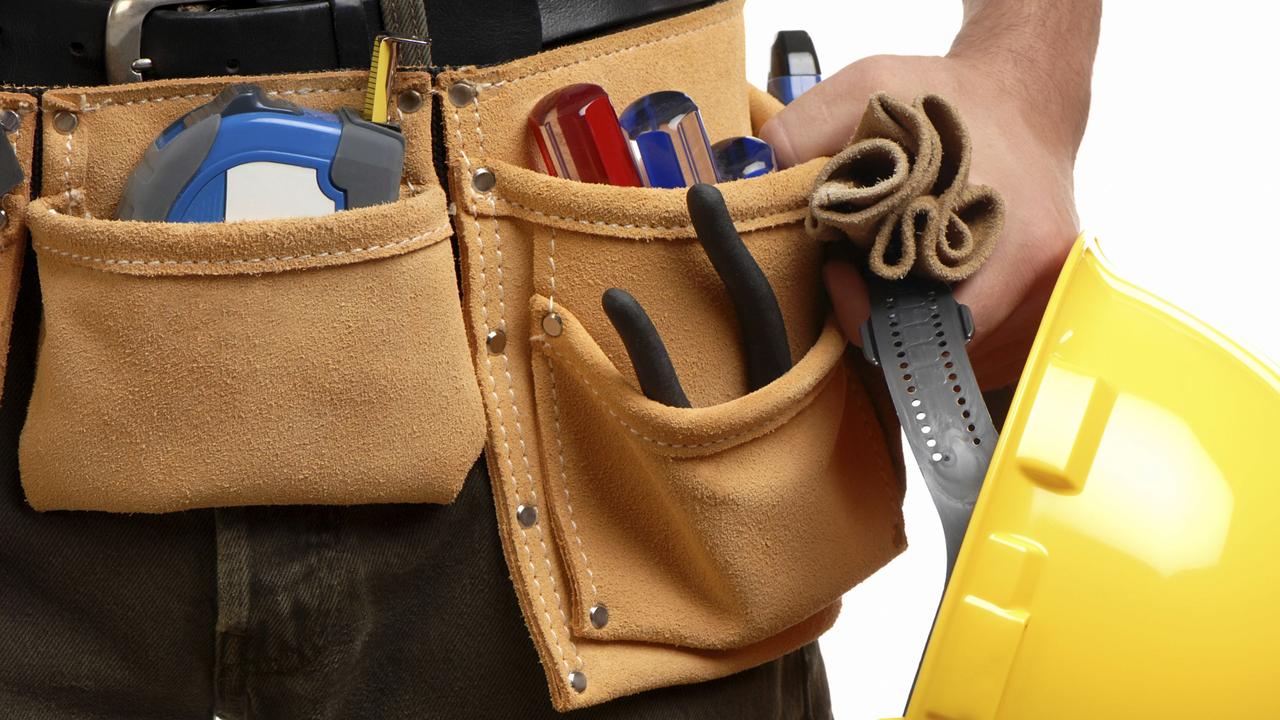Wild dogs far closer to southern towns than ever before, in $89m blow to sheep and cattle industry
FARMERS have shot or trapped 550 wild dogs south of the state’s dog fence since the start of the year and industry leaders are warning the pests are now dangerously close to rural towns.
SA News
Don't miss out on the headlines from SA News. Followed categories will be added to My News.
FARMERS have shot or trapped 550 wild dogs south of the state’s dog fence since the start of the year and industry leaders are warning the pests are now dangerously close to rural towns.
And latest figures show the economic cost of wild dogs on the nation’s agriculture industry has ballooned to $89 million, more than double estimates from 2009.
Two dogs have been shot on the outskirts of Burra near the Clare Valley this year, and wild dogs are being caught as far south as Eurelia in the Upper North, around Crystal Brook and at Port Neill on the Eyre Peninsula, according to Livestock SA member Geoff Power.
“There have also been reports of sheep losses and bites at Peterborough, Orroroo and in the Flinders Ranges,” Mr Power, who is chair of the National Wild Dog Action Plan stakeholder group, said.
“If they were to become established in peri-urban areas such as the Clare Valley or Barossa Valley, it would become extremely hard to eradicate them so it’s important wild dog control continues to remain a focus at a national and state level.”

Wild dogs — including dingoes, feral dogs and their hybrids — are having a growing impact on the state’s $1 billion-plus sheep industry, with many farms like Arcoona Station, 150km north of Port Augusta, forced to employ a full-time trapper.
Arcoona has trapped 99 wild dogs since January this year, with numbers climbing dramatically in the past few years from a dozen to about 20 or 30 dogs and then 53 last year.
“It’s a massive cost and we aren’t eligible to get any funding to help,” station manager Adam Willis said.
“And every year, they get further south and it’s only going to get worse. I would hate to think what would have happened if we hadn’t trapped the dogs we have this year and they all headed south.”
Industry leaders warned that farmers must remain vigilant as wild dogs continued to breed and grow in numbers inside the state’s 5614km dog fence.
Centre of Invasive Species Solutions figures released Tuesday showed the nation’s agriculture industry is booming with Australian beef, wool and lamb commanding top dollar on the export market. But the impact of pests like wild dogs, rabbits, foxes and feral pigs is rising dramatically.
“Our agricultural products, such as Australian beef and wool, are world-class and are making top dollar on the market,” chief executive Andreas Glanznig said.

“These increased commodity prices have contributed to the nearly doubling of the national economic impact of wild dogs, which is on average $89 million per year; the last analysis had wild dog costs at $48 million per year.”
Mr Power said while the Federal Government was providing $312,000 to continue funding the National Wild Dog Action Plan for the next two years, dog numbers were escalating.
Federal Government funds for a trapper, who destroyed 108 wild dogs in 14 months in SA, ran out in April last year and while a $120,000 federal grant had since been offered to subsidise land owners’ trapping costs, more needed to be done.
The Queensland government has committed $13.2 million in the past two years to help landholders build fences to protect sheep, and $1.9 million for three wild dog co-ordinators.
In contrast, stakeholders in SA, including the State Government, have committed less than $2 million this year to tackling the problem.

“Besides the impact they are having on livestock production, they are also causing significant damage to native animal populations,” Mr Power said.
At Princess Royal Station near Burra, owner Simon Rowe said many SA farmers “were getting rid of sheep because of the dogs and getting cattle”.
“We’ve shot two on our property this year, there’s a road alongside the Moomba pipeline and it’s a bit of a dog track, they seem to follow it down and are moving south,” he said.
“It’s a soft track and it leads right into Peterborough.”
Joint owner of Mt Eba Station out of Glendambo, Michelle Cousins, said there were just over 22,000 sheep on her property and they were continually finding sheep being killed, injured and traumatised by wild dogs.
Three wild dog pups were also found on the property this month.
“The worst part is they actually don’t hunt for hunger, they just traumatise animals and we end up with significant deaths and quite nasty injuries with the sheep, it’s not something you want to see,” she said.
Environment Minister Ian Hunter handballed questions to the Environment, Water and Natural Resources, with a spokeswoman saying “the State Government and the South Australian Arid Lands Natural Resources Management Board believe that the best solution for wild dogs in the region is to support landholders to eradicate wild dogs south of the dog fence, as landholders are required to do under the Natural Resource Management Act”.

She said a wild dog co-ordinator had been appointed and was based in Port Augusta to manage the state’s Wild Dog Strategic Plan.
“In 2017, nearly $2 million has been invested by industry, the South Australian Government, the Australian Government and the SA Arid Lands NRM Board to manage the wild dog population in South Australia,” she said. “This includes $620,000 invested by the State Government to help maintain the dog fence.”



